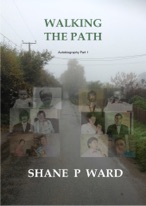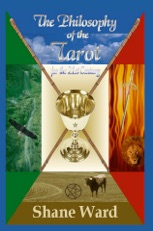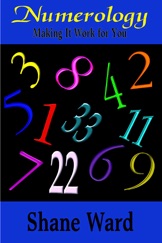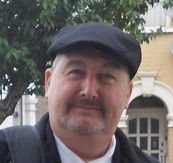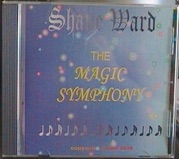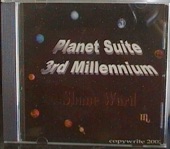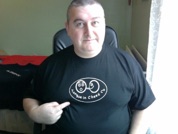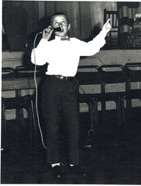Shane P Ward (Official Site)




Please do come in and look around. I hope you find something of value.
When I was born in 1960, there were about 11 people by the name of ‘Shane’ in the UK. I thought it would have been safe putting my name on my published works as it seemed most unlikely that there would be another Shane Ward.
Then, like buses, two turned up at the same time: one was an X Factor winner and the other an author of science fiction. Clearly I had to differentiate myself from these other ‘usurpers’ of my appellation, hence the letter P for the sake of mistaken identity.
My first ever book was “The Three Inquisitive Explorers”, written at the age of 9 in my Primary School. My teacher, Mrs McDonald, encouraged me to create a front cover and the whole thing was pinned together with staples; the only one in the class to do so. Coincidentally, the publisher with who I spent the most time with was the Synergebook publisher, Debi Staples.
Astronauts had not accomplished ‘one giant leap for mankind’ when my first attempt at exercising my imagination in word form came into being. It was a small step on a path I had not even considered at the time. Since then there has been no giant leaps but perhaps a series of small steps (although timely technological giant leaps helped) to become a published author.
I started smoking at the age of 16 and did not quit, successfully, until I was 44. However, quitting smoking was the third book I had published. The world of the occult was more attractive when I was 18 and I was searching for answers to questions I had not even formulated.
My first interest was to study Tarot with a socially awkward, and some might say deluded, mentor. I had copy drawn a whole pack of Tarot cards and when I went to buy a proper deck, the shop owner showed me his deck, which turned out to be the very deck I had studied.
For many years I spent time learning from him, about Tarot and also about numerology. It was he who laid out a treatise, on two A4 sheets of paper, that showed how the cards linked together in a logical sequence. This was my inspiration to dig much deeper and explore how profoundly relevant each card symbolised the foundations of everyday life and growth. It took me 25 years of study to reach that point.
When I started writing, I moved from an electronic typewriter to a new thing called a ‘home computer’. It was basically a word processor with a whopping 1.4mb floppy disk memory. By the time I finished writing it, I had progressed to a massive, top of the range, 1.2gb PC.
Without doubt it was the age of the computer that allowed me to circumnavigate the book publishers and music A&R men (Um and Ah as they were fondly referred to) whose job it was to decide what people wanted to read or listen to. Suddenly I was able to format my own books and produce music using music software, albeit that the sound fonts were quite primitive by today’s standards and I had to wait almost a decade longer to acquire some decent orchestral sound samples.
The next thing that opened up the world of publishing for me was the electronic book. At the time it was said that electronic books would supplant the physical paperback in 20 years. Well 20 years has now past and it is quite clear that both have a place. For me, however, it was a way to bypass the expense of publishing in paper format and be published in an electronic format.
Zander eBooks took my first book, The Philosophy of The Tarot for the 21st Century. It was a small beginning but I was published.
A year or so later, this publisher was bought out by Synergebooks. I spent a number of years with them, going on to publish ‘Numerology: Making it Work for You’. There were not a great deal of books available on this subject and only one that was arguably the most comprehensive text on the subject. But I saw a market for a way for the beginner to learn some simple rules and then start to use the book almost as a template that described 279 different character types.
My father smoked until he was age 33. My mother never smoked at all but they both worked in social clubs in a band (passive smoking). I used to sing with the band from the age of 5, doing my ‘spot’ like a performing seal but mostly I enjoyed it. Before they both died from lung cancer, I said I did not want to follow in my father’s footsteps, so if he stopped smoking at age 33, I said I would stop at age 44.
On my 44th birthday I remembered my promise and thought, ‘Bugger, I’m going to have to quit now’. It took a few months to put together things like nicotine replacement therapy, the new fangled nicotine patches and the awful tasting gum, before I started to quit. I had tried Alan Carr’s book, ‘The Easy way to Stop Smoking’ and discovered that for some it was not easy at all.
The idea to write, ‘Stop Smoking: Diary of a Quitter’ arose from the discovery that doing something with my hands, like typing on a computer, stopped me from reaching for the cigarette that was no longer there. And so began a real time diary that I wrote while quitting, along with a whole host of other quitters on a smoking cessation website. It was a great way to discover all the common problems people had while quitting and to support each other at the same time.
Part of my quitting smoking therapy was to write humorous poems. By the time I had quit successfully I had over 50 poems on my computer. This was evidently the beginning of another book, for sure, but to offer value for money I felt it needed to be increased to 100 poems. I was also encouraged to go ahead with the idea of a book after my poem ‘Where do All the Odd Socks Go?’ was accepted into an anthology entitled ‘Teardrops of Emotion’ (Dogma Publications, 2004, P3).
Looking back on a life lived so far, it seemed a useful exercise to start an autobiography. Up to then I saw myself neither as a successful author, a music composer or at any level comparable to the ‘this is how I got there’ autobiographies. But that was the point of writing it. As I am still living part 2, I can see how things have moved on from where I was at around the midlife crisis age (or as astrologers will tell you, the Uranus opposition). Aside from the stated ambitions there is an awful lot of life that describes a journey steeped in emotional ups and downs, family ties and unrelated challenges.
When I took up the study of the occult, it involved committing myself to what you might describe as an evolutionary shove. What many people do not realise is that the most valuable internal growth and development comes from the most challenging, difficult and painful events. In hindsight I can see that ‘The Philosophy of the Tarot for the 21st Century’ would not be half so good had I opted for the path of least resistance.
The ‘path’ I chose was one where I would knowingly face more difficult situations than if I had remained ignorant of its knowledge. Hence the rather dull name of ‘Walking The Path’ is perhaps a more exciting journey than the title suggests.
There is more to follow and I retired from work to create the time to achieve at least one novel and more music. Then I discovered that creating time is easily taken up by anything and everything. The Universe has not finished with me yet but before I consider completing part 2 of my autobiography, which is shaping up to be just as eventful as part 1, there is more ‘path’ on which to travel. The goal I have set for this book is the year 2030, at which point I may consider retiring for the second time.

Shane P Ward
